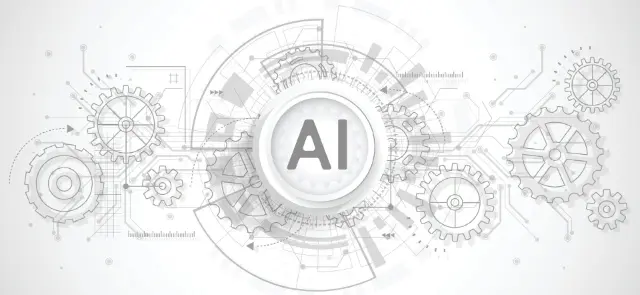Employee Onboarding Automation: A Key to Unlocking Retail’s Talent Potential
The retail industry is constantly evolving, and with it, the need for a streamlined and efficient employee onboarding process. Employee onboarding automation can help retailers overcome challenges such as high turnover rates, long onboarding times, and inconsistent training. By automating tasks such as candidate screening, interview scheduling, and training delivery, retailers can free up HR teams to focus on more strategic initiatives.
Python, artificial intelligence (AI), and cloud-based solutions are powerful tools that can be used to automate the employee onboarding process. Python is a versatile programming language that is well-suited for automating repetitive tasks. AI can be used to screen candidates, schedule interviews, and provide personalized training. Cloud-based solutions can provide the scalability and flexibility that retailers need to manage their onboarding process effectively.
Employee onboarding automation can provide a number of benefits for retailers, including:
- Reduced onboarding time
- Improved accuracy and consistency
- Reduced costs
- Increased employee satisfaction
- Improved compliance
If you are a retailer looking to improve your employee onboarding process, employee onboarding automation is a solution that you should consider. By automating tasks, you can free up your HR team to focus on more strategic initiatives, improve the accuracy and consistency of your onboarding process, and reduce costs.

Python, AI, and Cloud: The Power Trio for Employee Onboarding Automation
Python, AI, and cloud-based solutions are the key ingredients for successful employee onboarding automation.
Python: The Swiss Army Knife of Automation
Python is a versatile programming language that is well-suited for automating a wide range of tasks. In the context of employee onboarding, Python can be used to develop both unattended and attended bots.
- Unattended bots can be used to automate tasks that do not require human intervention, such as screening candidates, scheduling interviews, and sending out offer letters.
- Attended bots can be used to assist HR teams with tasks that require human input, such as conducting interviews and providing training.
AI: The Secret Sauce for Accuracy and Efficiency
AI can be used to improve the accuracy and efficiency of employee onboarding automation. For example, AI can be used to:
- Screen candidates and identify the most qualified applicants.
- Schedule interviews and find the best time for both the candidate and the interviewer.
- Provide personalized training to new employees based on their individual needs.
Cloud: The Scalable and Flexible Foundation
Cloud-based solutions provide the scalability and flexibility that retailers need to manage their onboarding process effectively. Cloud-based solutions can be used to:
- Store and manage candidate data
- Host and deliver training materials
- Track the progress of new employees
Benefits of Using Cloud Platforms
There are many benefits to using cloud platforms for employee onboarding automation, including:
- Scalability: Cloud platforms can be scaled up or down to meet the needs of your business.
- Flexibility: Cloud platforms can be used to automate a wide range of tasks, from simple to complex.
- Reliability: Cloud platforms are highly reliable and offer a high level of uptime.
- Security: Cloud platforms provide a high level of security to protect your data.
- Cost-effectiveness: Cloud platforms are typically more cost-effective than on-premises solutions.
AI Techniques for Enhanced Automation
There are a number of specific AI techniques that can be used to make employee onboarding automation more powerful, including:
- Image recognition: Image recognition can be used to automate tasks such as scanning resumes and extracting data from documents.
- Natural language processing (NLP): NLP can be used to automate tasks such as answering candidate questions and providing personalized training.
- Generative AI: Generative AI can be used to automate tasks such as creating job descriptions and writing offer letters.
By using Python, AI, and cloud-based solutions, retailers can automate the employee onboarding process, improve accuracy and consistency, and reduce costs.

Building the Employee Onboarding Automation
The employee onboarding process can be broken down into a number of sub-processes, each of which can be automated using Python and cloud-based solutions.
1. Posting Job Openings and Screening Candidates
The first step in the employee onboarding process is to post job openings and screen candidates. This can be automated using Python to:
- Parse job boards and extract relevant data
- Screen candidates based on pre-defined criteria
- Send out invitations for interviews
2. Scheduling Interviews
Once candidates have been screened, the next step is to schedule interviews. This can be automated using Python to:
- Find the best time for both the candidate and the interviewer
- Send out interview invitations
- Track the status of interviews
3. Extending Job Offers
Once interviews have been conducted, the next step is to extend job offers to successful candidates. This can be automated using Python to:
- Generate offer letters
- Send out offer letters
- Track the status of offer letters
4. Onboarding New Employees
Once candidates have accepted job offers, the next step is to onboard them. This can be automated using Python to:
- Create user accounts
- Assign roles and permissions
- Provide access to training materials
Data Security and Compliance
Data security and compliance are important considerations for any organization, especially in the retail industry. When automating the employee onboarding process, it is important to take steps to protect sensitive data, such as:
- Encrypting data at rest and in transit
- Using access controls to restrict access to data
- Regularly backing up data
Python vs. No-Code RPA/Workflow Tools
There are a number of advantages to building employee onboarding automation in Python over using no-code RPA/workflow tools, including:
- Flexibility: Python is a more flexible language than no-code RPA/workflow tools, which allows you to customize the automation to meet your specific needs.
- Scalability: Python is a more scalable language than no-code RPA/workflow tools, which allows you to automate more complex processes.
- Cost-effectiveness: Python is a more cost-effective language than no-code RPA/workflow tools, especially for large-scale automation projects.
Algorythum’s Approach
Algorythum takes a different approach to employee onboarding automation than most BPA companies. We believe that off-the-shelf automation platforms are not always able to meet the specific needs of our clients. As a result, we develop custom automation solutions using Python and cloud-based solutions. This approach allows us to provide our clients with the flexibility, scalability, and cost-effectiveness they need to achieve their business goals.

The Future of Employee Onboarding Automation
The future of employee onboarding automation is bright. As technology continues to evolve, we can expect to see even more innovative and powerful automation solutions.
One area of future growth is the use of artificial intelligence (AI) to automate even more complex tasks. For example, AI could be used to:
- Screen candidates based on their skills and experience
- Conduct interviews and assess candidates’ fit for the role
- Provide personalized training to new employees
Another area of future growth is the use of blockchain technology to secure and track employee data. Blockchain technology could be used to:
- Create a secure and tamper-proof record of employee onboarding transactions
- Track the progress of new employees through the onboarding process
- Ensure that all employee data is accurate and up-to-date
We encourage you to subscribe to our blog to stay up-to-date on the latest trends in employee onboarding automation. And if you are interested in learning more about how Algorythum can help you automate your employee onboarding process, please contact us today for a free feasibility and cost-estimate.
Employee onboarding automation is a powerful tool that can help retailers improve the efficiency and accuracy of their onboarding process. By using Python, AI, and cloud-based solutions, retailers can automate a wide range of tasks, from screening candidates to providing training. As technology continues to evolve, we can expect to see even more innovative and powerful employee onboarding automation solutions in the future.

Algorythum – Your Partner in Automations and Beyond
At Algorythum, we specialize in crafting custom RPA solutions with Python, specifically tailored to your industry. We break free from the limitations of off-the-shelf tools, offering:
- A team of Automation & DevSecOps Experts: Deeply experienced in building scalable and efficient automation solutions for various businesses in all industries.
- Reduced Automation Maintenance Costs: Our code is clear, maintainable, and minimizes future upkeep expenses (up to 90% reduction compared to platforms).
- Future-Proof Solutions: You own the code, ensuring flexibility and adaptability as your processes and regulations evolve.









